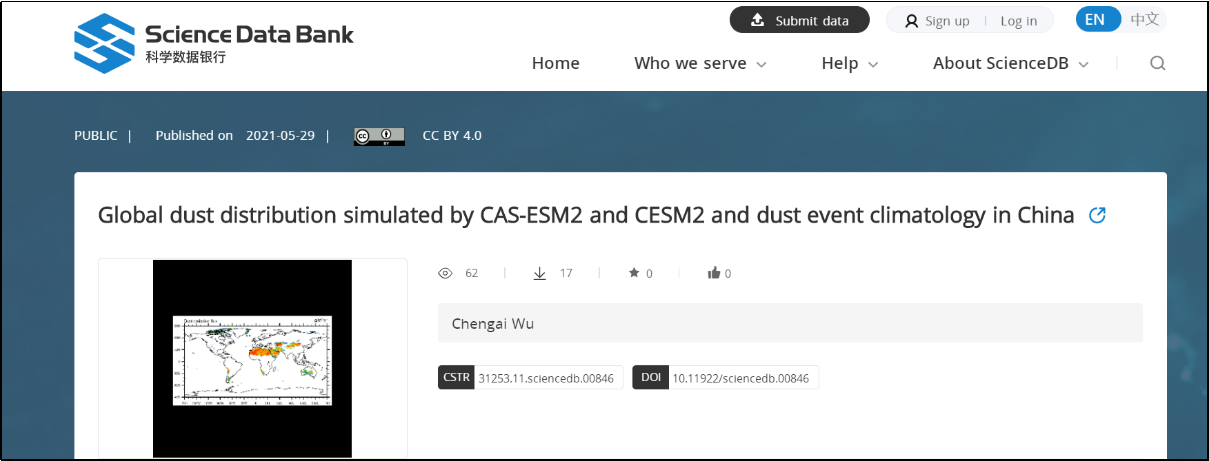Climate and Environment
AMES/AAS: China's first independently developed Earth system model to participate in the international coupling model comparison program
Mathematical modeling and numerical simulation are important means to study the evolution mechanism of the Earth shells and predict their future changes. With the better understanding of it, the physical and chemical processes considered by the model tends to be more remine. To face the severe challenges caused by climate change, President Xi Jinping proposed on the 75th session of the United Nations General Assembly in September 2020 that China's carbon dioxide emissions should peak by 2030
2021-11-15
CAS-TWAS Centre of Excellence for Climate and Environment Sciences has released data on the distribution of global sand fluxes to serve Belt and Road countries
Associate Researcher, Dr. Chenglai Wu, from the Center released global dust flux distribution data, which provides statistics on global dust emission flux, sedimentary flux, load, and optical depth of two Earth system models (CAS-ESM2) and community earth system model CESM2) for global dust emission flux, sedimentary flux, load, and optical depth between September 1998 and August 2010. as well as statistics on the characteristics of sand and dust events at China's weather stations.Dust is an
2021-11-15
Development of cas-esm sand lifting scheme and its good reproduction ability to global and East Asian dust cycle
As the most important natural aerosol, sand dust not only causes serious air pollution, but also has an important impact on climate and environment. It plays an important role in the evolution of the earth system. Therefore, sand dust cycle is one of the processes that need to be considered in the earth system model.On the basis of previous work, Wu chenglai, Lin Zhaohui, Zhang he and their collaborators, associate researchers of the earth system model research and development team of the climat
2021-10-21The center of climate and environmental excellence continues to share marine multivariable (temperature, salinity, stratification, etc.) grid observation data sets
Cheng Lijing, associate researcher of the center, developed the grid observation data (IAP data set) of the most important marine physical variables such as global ocean temperature, salinity and stratification. One belt, one road map, is a key basis for the study of climate change, climate monitoring, physical oceanography, climate policy, and socio-economic impact assessment.The original data of this data set is all field observation data from the global ocean database (wod), including XBT, CT
2021-09-30